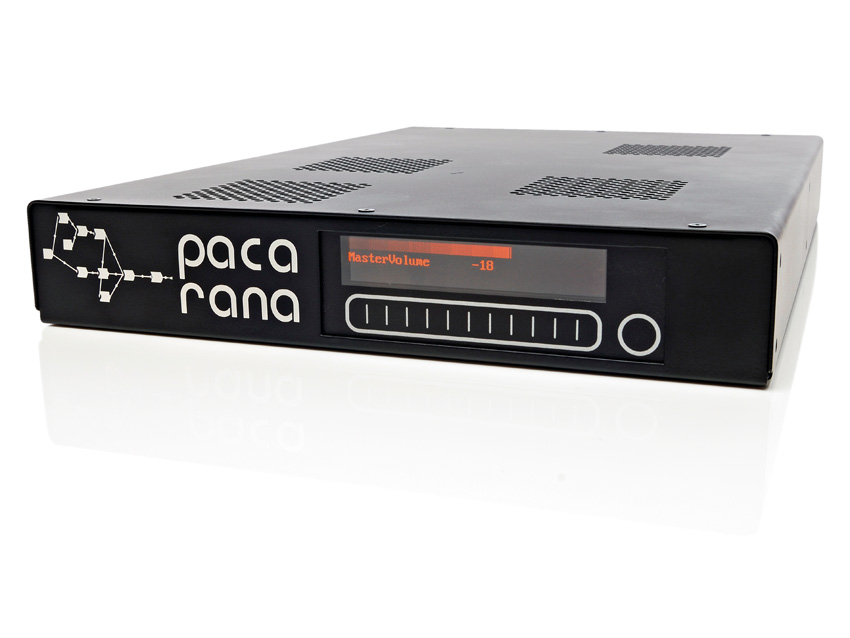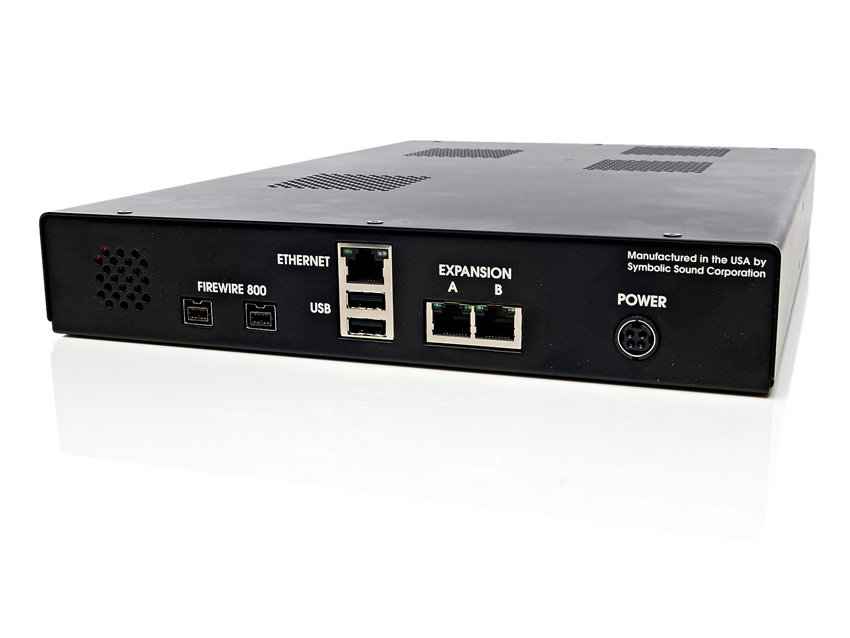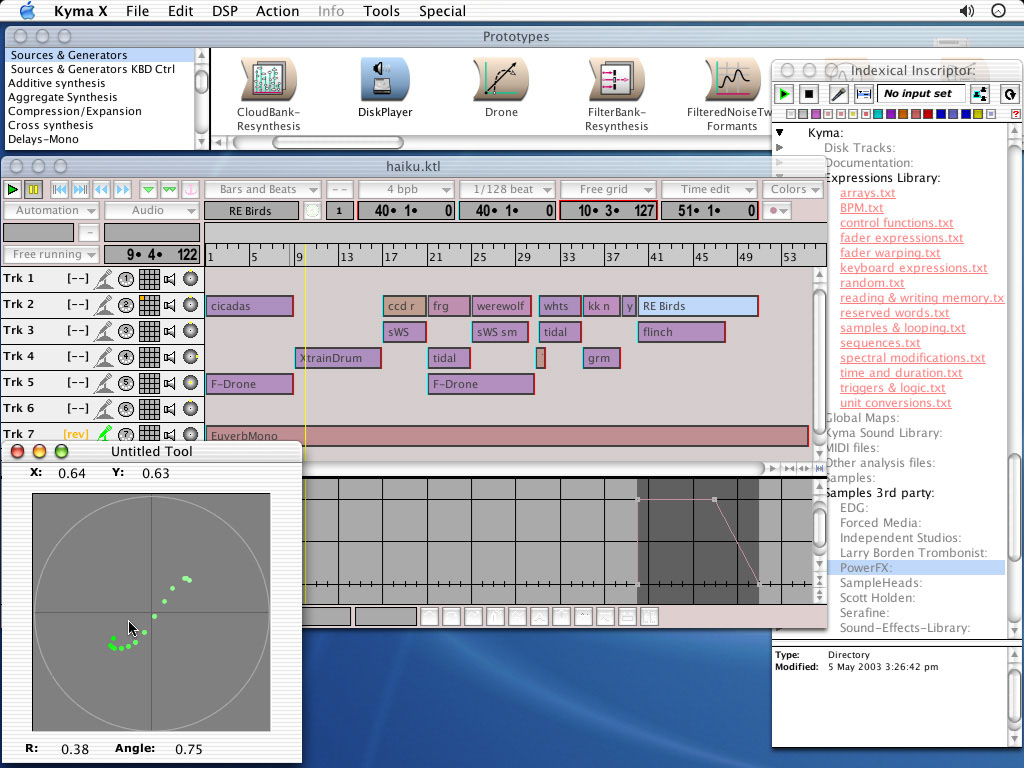MusicRadar Verdict
Expensive and not for everyone but those who dive in will be rewarded with endless audio sculpting possibilities.
Pros
- +
Awesome programmable DSP power for alpha-geeks. An impressive library of pre-built patches and a free book to get you started. Pick your level of expertise, from load-and-play to code-and-tweak.
Cons
- -
Deep and complex. Expensive.
MusicRadar's got your back

Symbolic Sound Pacarana

Symbolic Sound Pacarana
Should you be feeling jaded at the thought of yet another me-too soft synth, Kyma-X provides the ultimate high-end antidote.
Firstly, it's not so much a soft synth, more of an audio construction kit, like Reaktor or SynthEdit, but on a shop full of steroids. Kyma-X arrives with an external DSP box called Pacarana for the number crunching, which means that patches - they're called 'sounds' - always work, even if you're running them on a basic laptop.
In the latest update, you can add extra DSP power by plugging in more boxes, to create an expensive but powerful planet-eating über-Kyma network.
In terms of that power, Kyma-X is way, way beyond anything else you can buy. Compared to, say, Reaktor, Kyma-X adds more options than you can wave a Visa card at, including resynthesis, morphing and scripting, and live MIDI processing and improvisation.
You don't just get total control over audio, you get a brain-expanding education in how to think about sound. The basic system is a patchable pseudo-modular, but there's also a timeline you can use to assemble a complete performance, with patch automation, or sync a mix to timecode.
Kyma chameleon

Kyma-X is smart, and Kyma-X can listen. With the supplied modules you can build all of the usual basics, including digital and virtual analogue synthesizers, vocoders and custom processors. But the extra processing power means that you can also do insane things like patch together polyphonic synth voices with 64 sawtooth oscillators each.
You can also trigger, mutate, re-patch or process audio in ways that depend on what's happening at the input. Sidechain FX are trivially easy. But you can take the smart processing much further, recognising certain words in a vocal line, and sending them to different FX chains.
This kind of Kyma-Fu takes advanced skills, so you won't be doing it immediately. But it's a few hundred steps beyond what's possible with a synth construction kit.
Naturally, the power comes at a price. By soft synth standards, Kyma-X isn't cheap - but to be fair, as a professional unit Kyma-X isn't any more expensive than some more upmarket hardware reverb units.
The rest of the cost is in the learning curve. Getting around the basics is easy and you'll be making sounds in no time. After that, you'll need to spend some time getting used to Kyma-X's unique approach.
Morphing
Kyma has the unique ability to morph sounds, melting them into each other like plastic. This is completely different to the usual crossfade effect, because pitch, timbre and rhythm all change simultaneously.
Kyma-X has been used in heaps of films to create the sound of an androgynous singing voice, half way between male and female pitch and timbre. But it's also been used in adverts, morphing the sound of typing into a Caribbean holiday jingle.
There's a lot happening behind the scenes to make morphing possible. To morph two sounds you run them through an analysis process which creates a special non-audio file that includes all of the ingredients needed to rebuild the sound, and then plug them into one of the morphing modules.
After analysis pitch, timbre and time stretching can all be controlled independently, and with only a little more effort you can morph manually with a slider, or under LFO or envelope control.
You can also control a morph by listening to incoming audio, and pick out whatever feature you want to use as a controller - from average loudness, to the volume of one very specific frequency band.
Issues
In terms of letdowns, the biggest issue is the lack of direct DAW integration. In an ideal world, Kyma-X would sit in a mix inside a VST, RTAS or AU wrapper, and you'd be able to pipe MIDI and audio to and from it without leaving the comfort of a FireWire lead.
That's the long term plan - AU support is coming first - but for now you have to treat Kyma-X as physical outboard, with its own MIDI connector. To get audio and MIDI into and out of Pacarana you'll need extra hardware from a third party.
There's a list of supported hardware on the website, but whatever you use will have to be dedicated to Kyma-X - anything with a FireWire or USB connector won't work with your PC or Mac at the same time. This all adds to the price, and detracts from convenience.
The scripting feature isn't so much a problem as a challenge. You can write tiny or large applications using the Capytalk language. The basics aren't too hard, and scripting gives you uber-power over Kyma-X. Non-coders may find this a brain exercise too far, but coders will feel like they've gone to heaven.
Finally we'd also like the software to be - well - prettier. It's best described as functional rather then stylish, and there's room for improvement in the look and feel. This doesn't affect the features, but some more attractive skins and backgrounds wouldn't go amiss.
Summary
If you're new to synthesis, you'll find using Kyma-X is like falling down a black hole. If you're still struggling with oscillators and filters, trying to get up to speed with everything Kyma-X can do will make your brain explode in a very messy but not necessarily unpleasant kind of a way.
If you have more experience and plenty of imagination, Kyma-X is more like the synthesizer you want from Santa. It does everything you want, and almost everything you haven't thought of yet. If you think of it as a modern modular you won't go far wrong.
If you're looking for the usual selection of lush pads, Trance multisaws, Moog basses and percussion zips, you can find them elsewhere. Kyma-X can make all these sounds, but you won't find them in the preset list.
Instead, Kyma-X has the potential to do something which is rare - create sounds which are unique and which move and respond in original ways. It's a challenging product, but perfect for adventurous DJs, ambient artists, professional sound designers, and anyone else who wants to stretch their sounds well outside of the traditional virtual analogue comfort zone.
Take a listen to some Kyma-produced sounds:
Future Music is the number one magazine for today's producers. Packed with technique and technology we'll help you make great new music. All-access artist interviews, in-depth gear reviews, essential production tutorials and much more. Every marvellous monthly edition features reliable reviews of the latest and greatest hardware and software technology and techniques, unparalleled advice, in-depth interviews, sensational free samples and so much more to improve the experience and outcome of your music-making.
“Excels at unique modulated timbres, atonal drones and microtonal sequences that reinvent themselves each time you dare to touch the synth”: Soma Laboratories Lyra-4 review
“I used everything I knew about music”: How Green Day exceeded expectations with their most ambitious song
YouTube just added AI tools that makes musicians, library music and video editors redundant










